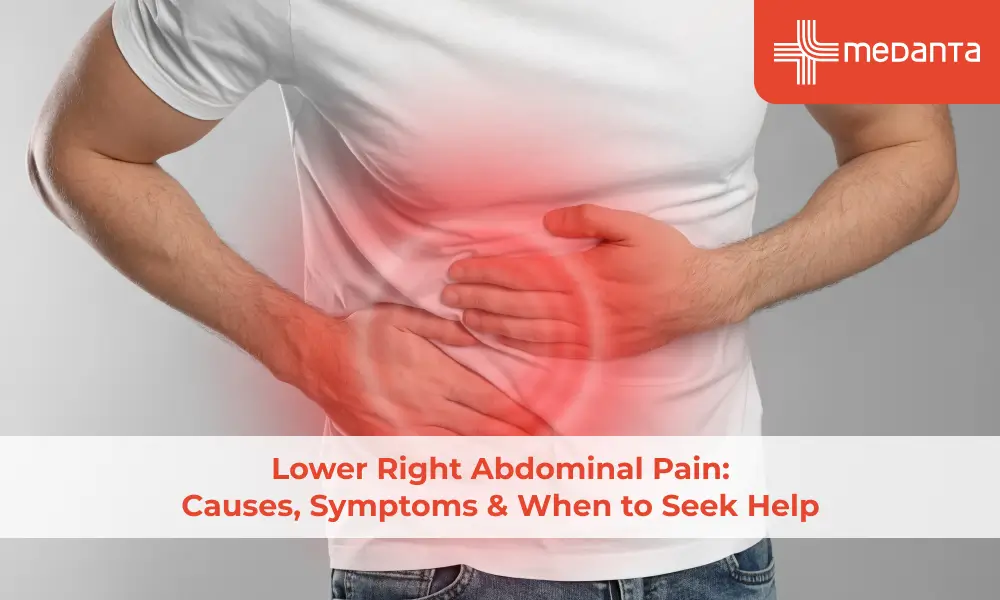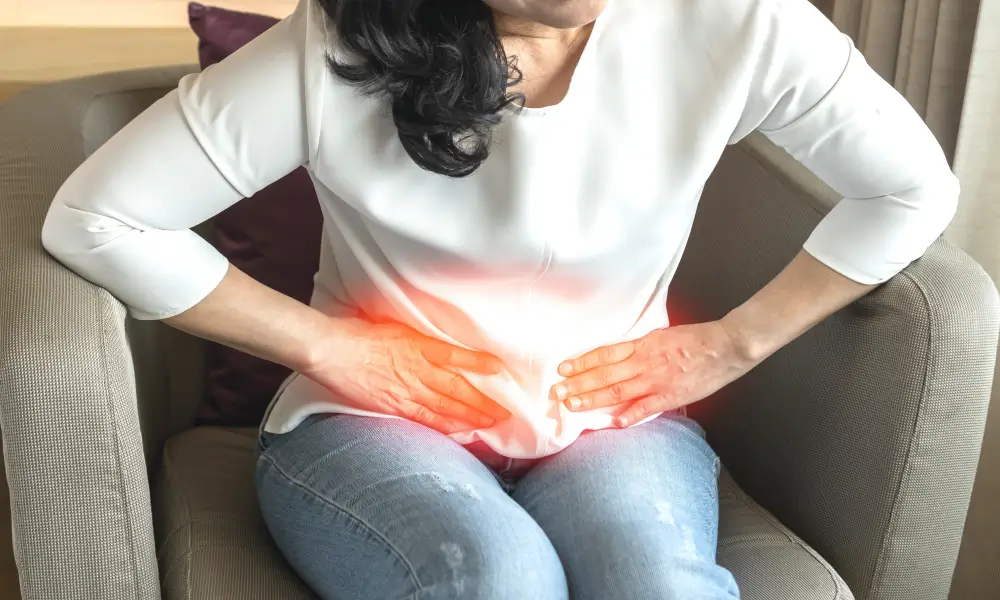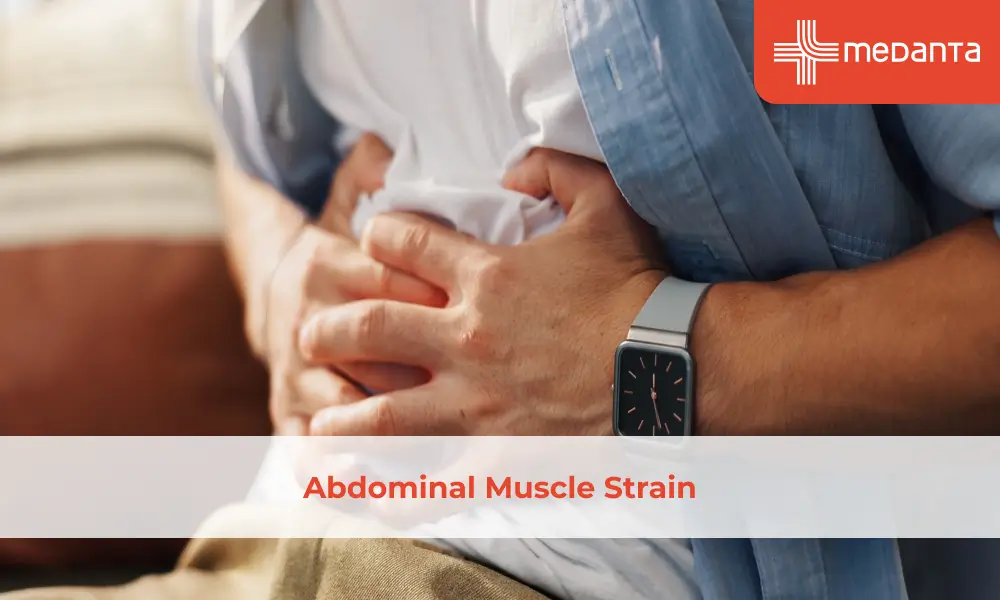Lower Right Abdominal Pain: Causes, Symptoms & When to Seek Help

TABLE OF CONTENTS
Pain in the lower right abdomen can signal various medical conditions, ranging from mild discomfort to life-threatening emergencies. This area of the body houses several vital organs, including the appendix, part of the colon, and, in females, the right ovary, making accurate diagnosis crucial for proper treatment.
While some causes might be as common as excessive gas, which typically occurs up to 30 times daily in healthy individuals, others can be more serious, such as appendicitis, kidney stones, hernias, and irritable bowel syndrome, require immediate medical attention, as they can result in complications if left untreated.
This comprehensive blog explores the various causes of discomfort in the lower right abdomen, how doctors diagnose the root cause of pain on the right side of the stomach, and available treatment options to help readers understand when to seek medical attention.
What Causes Discomfort or Ache in the Lower Right Abdomen?
Several medical conditions can trigger pain in the lower right abdomen, each requiring different treatment approaches. Understanding these causes helps in recognising their severity and seeking appropriate medical attention.
Appendicitis: Appendicitis occurs through inflammation of the appendix, a small tube-shaped organ connected to the large intestine. The condition develops rapidly, with pain typically starting around the belly button before moving to the lower right abdomen. A burst appendix can spread infection throughout the abdominal cavity, requiring emergency surgery within 36 hours of initial symptoms.
Kidney Stones: Kidney stones form from mineral buildups in the urinary tract. The pain often radiates from the back to the lower abdomen and groin area. These stones can range from tiny crystals to larger masses, causing sharp, cramping sensations. Furthermore, dark or bloody urine often accompanies kidney pain.
Kidney Infections: Sometimes, urinary tract infections (UTIs) and UTIs spreading to one or both kidneys can result in lower right stomach ache.
Digestive Issues: Digestive problems frequently cause discomfort in the lower right abdomen. Conditions affecting the small intestine, colon, or other digestive organs, such as indigestion, irritable bowel syndrome(IBS), Intestinal gas, or inflammatory bowel disease (IBD), can manifest as persistent pain.
Ovarian Cysts or Tumours: Ovarian cysts are fluid-filled sacs that arise on the ovaries. Most cysts resolve naturally. However, larger ones can cause significant discomfort. Consequently, a ruptured ovarian cyst might lead to severe complications requiring immediate medical attention.
Hernias: Inguinal hernias occur through abdominal tissue pushing through the lower abdominal wall, causing aches in the lower right abdomen. Up to 75% of all hernias are inguinal hernias, affecting approximately 25% of males and 2% of females during their lifetime.
Ectopic Pregnancy: An ectopic pregnancy develops outside the uterus, commonly in the fallopian tube. This condition demands immediate medical intervention as it can cause life-threatening bleeding.
Fibroids in the Uterus: Uterine fibroids are noncancerous tumours growing in or on the uterus. These growths can cause various symptoms, including discomfort in the lower right abdomen.
Pelvic Inflammatory Disease (PID): PID results from an infection in the female reproductive organs. The condition can cause permanent damage if left untreated, affecting up to 10% of people with fertility issues.
Testicular Torsion: Testicular torsion (testicles get twisted around the spermatic cord) can sometimes cause referred pain in the right lower abdomen due to nerve connections.
How Doctors Diagnose Abdominal Pain
Physical Assessment: Doctors employ a systematic approach to diagnose the source of pain in the lower right abdomen. The physical examination starts with a visual inspection of the abdomen, followed by listening to intestinal sounds with a stethoscope. Doctors then tap different areas to determine organ size and press gently to identify painful spots. This systematic approach helps narrow down potential causes of aches in the lower right abdomen.
Laboratory Tests: Doctors commonly request:
Complete blood count to check for infections
Liver enzyme tests to assess liver function
Urine analysis to detect urinary tract problems
Pancreatic enzyme tests to evaluate pancreas health
Stool samples to identify blood or infection
Imaging Tests: These tests form a vital part of diagnosis, mainly when laboratory results are inconclusive. Accordingly, doctors choose specific imaging methods based on the location and nature of the pain. These include:
Ultrasound is the primary imaging tool for right upper quadrant pain.
Computed tomography (CT) provides comprehensive cross-sectional images of internal organs and soft tissues, helping doctors identify various conditions.
Magnetic resonance imaging (MRI) is a radiation-free option, particularly beneficial for young patients and pregnant women in detecting causes of lower right abdominal pain by identifying appendicitis, ovarian cysts, inflammation, tumours, and soft tissue abnormalities.

Home Remedies & Treatment Options
Treatment modalities for pain in the lower right abdomen range from simple home remedies to prescribed medications, depending on the underlying cause. Managing this discomfort starts with basic home care methods that often bring relief.
Warm Compress: For mild cases, applying a warm compress or heating pad to the abdomen helps improve blood flow and reduce cramping.
Hydration: Drinking plenty of clear fluids, especially water, aids digestion and prevents dehydration.
BRAT Diet: The BRAT diet (Bananas, Rice, Applesauce, Toast) proves beneficial for digestive issues. These foods are gentle on the stomach and help restore normal bowel function.
Medications:
Antacids help reduce stomach acidity
Simethicone-based medicines address gas-related pain
Steroids for chronic conditions
Proton pump inhibitors for acid-related issues
Antibiotics for bacterial infections
Sometimes, doctors administer intravenous medicines at a hospital for immediate pain relief.
However, avoid aspirin or anti-inflammatory drugs unless specifically advised by a doctor, as these can worsen certain types of abdominal pain.
Lifestyle Modifications: Avoiding difficult-to-digest foods, such as fatty, acidic, or spicy items, helps reduce discomfort. Similarly, limiting alcohol intake and quitting smoking contribute to better digestive health.
Home Remedies: Alongside these treatment approaches, herbal remedies offer natural relief:
Ginger tea reduces nausea and digestive discomfort
Peppermint tea relaxes stomach muscles and eases bloating
Chamomile tea soothes the digestive tract
Fennel seeds help relieve gas and cramping
Conclusion
Lower right abdominal pain ranges from mild digestive issues to serious medical emergencies. Though home remedies and over-the-counter medications help manage minor cases, certain conditions demand immediate medical attention. Appendicitis, kidney stones, or ectopic pregnancy require quick medical intervention to prevent complications.
Doctors use different diagnostic tools to identify the root cause. These tools include physical examinations, laboratory tests, and imaging studies. Each diagnostic method serves a specific purpose in creating an accurate diagnosis, which leads to effective treatment.
The right treatment approach depends entirely on the underlying cause. Simple lifestyle changes and home remedies work well for mild cases, while severe conditions might need medication or surgery. People experiencing persistent or severe pain should seek medical help rather than relying solely on self-treatment.
Understanding these symptoms and their potential causes helps people make better healthcare decisions. A proper diagnosis followed by appropriate treatment ensures the best possible outcome for anyone dealing with lower right abdominal pain.
FAQs
What are the common causes of right lower abdominal pain?
Common causes include appendicitis, renal infections, kidney stones, ovarian cysts, gastrointestinal issues (like IBS or IBD), and gynaecological issues.
When should I see a doctor for abdominal pain?
Medical intervention becomes necessary if the pain persists for several days. Seek emergency care for severe symptoms, including:
Shortness of breath or chest pressure
Persistent nausea and vomiting
Blood in vomit or stool
Severe tenderness when touching the abdomen
Unusual abdominal swelling
Black or tar-like stool
Why does my stomach hurt when pressed?
Pain upon pressing the abdomen indicates inflammation of underlying organs. This might stem from appendicitis, abdominal abscess, or intestinal lining inflammation.
Can gynaecological conditions cause right lower abdominal pain?
Gynaecological conditions like ovarian cysts, ectopic pregnancy, endometriosis, or pelvic inflammatory disease (PID) can cause pain in the right lower abdominal area.
What indicates serious abdominal pain?
Seek immediate medical care if experiencing:
High fever
Persistent vomiting
Bloody diarrhoea
Firm or stiff abdomen
Sudden, intense pain
How do doctors determine the cause of abdominal pain?
Doctors generally identify the cause through clinical examination. Depending on the suspected condition, further confirmation might require blood tests, X-rays, or sonography.





